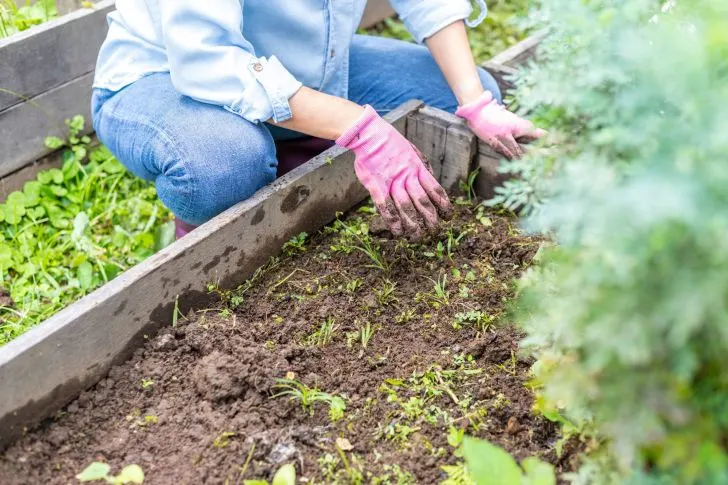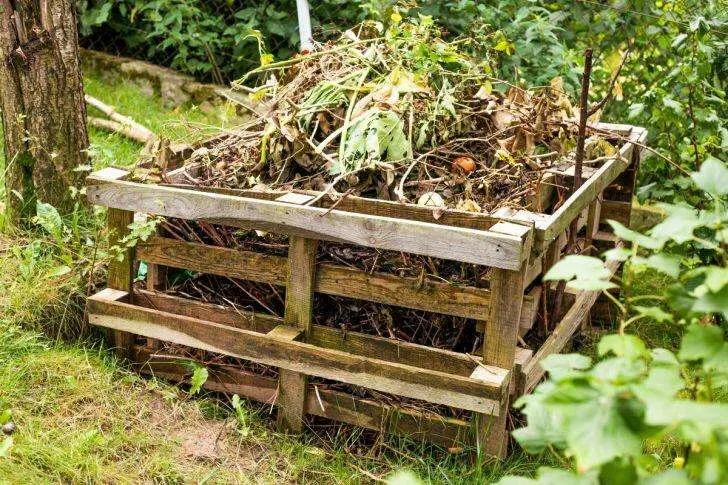Recycling is a fantastic initiative, and what better way to contribute than building your compost bin?
This eco-friendly project can help reduce household waste while creating nutrient-rich soil for your garden.
Anyone can construct a durable and efficient compost bin using simple materials.
So, what exactly will this article explore? It’s about a step-by-step guide on how to build a compost bin out of pallets.
Each section ensures a straightforward experience from gathering materials to their assembly.

The Building Process!
Here are the steps to guide you through the construction of a compost bin using pallets:
1. Gather the Necessary Materials
The first step in this project is to gather all the necessary materials.
Pallets are the primary requirement. These can be sourced from local businesses, shipping docks, or even a Fruit Growers Pallet Manufacturer. Ensure the pallets are not chemically treated, which could harm the compost.
Also required are corner brackets for added stability, galvanized nails or screws for durability, a hammer or screwdriver for assembly, and sturdy wire mesh to prevent the compost from spilling out.
Lastly, remember to have a saw if any adjustments are necessary.
2. Pick the Perfect Pallets
Choosing the right pallets is crucial for this project.
Four pallets of the same size are needed for a square bin. Alternatively, three pallets can make a three-sided bin.
However, remember that a three-sided bin might be more prone to spilling.
While picking pallets, ensure they’re sturdy and free from splinters. Also, as previously mentioned, avoid chemically treated pallets. Instead, look for heat-treated ones marked with an “HT” on their label.
3. Preparing for Assembly
Before starting the assembly process, prepare the working area.
The space should be open and flat, ideally near where the compost bin will finally be placed.
Measure the pallets and note down their dimensions. It will help make a perfect square or rectangle during the assembly stage.
4. Assembling the Compost Bin
Once the groundwork is ready, it’s time to start assembling the compost bin.
Place two pallets at a 90-degree angle and secure them together using galvanized screws or nails. Repeat this step for the third and fourth pallets, ensuring a square or rectangular structure.
Next, use corner brackets inside the compost bin for added stability. This step is optional but highly recommended, especially for a four-sided bin.
5. Finishing Touches
After the basic structure is assembled, attach a sturdy wire mesh to the inside of the compost bin. It will prevent the compost from falling out while allowing air to circulate freely. To secure the mesh, use a staple gun.
With this, the compost bin is ready for use.
But remember to maintain it. Turn the compost pile every few weeks using a pitchfork or shovel. It promotes air circulation and speeds up the composting process.
Troubleshooting Common Problems!
Like any DIY project, building a compost bin may have its hiccups.
However, these are easy to overcome. For instance, if the compost pile smells, it might be too wet. Add more ‘brown’ materials like dried leaves or newspaper to rectify this.
If the composting process is too slow, the compost pile might need more ‘green’ materials like fruit and vegetable scraps.
Regularly turning the pile can also speed up the process.
Making the Most of Your Compost!
Getting the most out of the compost bin you’ve built involves understanding what can and can’t be composted.
- What to Compost: Add fruit and vegetable scraps, coffee grounds, eggshells, leaves, grass clippings, and straws. These items will break down quickly and enrich your compost with nutrients.
- What Not to Compost: Avoid adding meat, dairy products, diseased plants, and weeds to the compost. These can attract pests or introduce diseases to your compost.
- Balancing Brown and Green: An essential aspect of composting is maintaining the right balance between brown and green materials. Brown materials are rich in carbon. In contrast, green materials are high in nitrogen. Aim for a 3:1 ratio of browns to greens.
Now, let’s look at how you can effectively utilize your compost in the garden.

Utilizing Your Compost in the Garden
After several weeks of composting, you’ll have rich, dark soil ready for use in the garden.
This black gold can be used in various ways to enhance your garden’s health and productivity.
- Enriching your soil is one of the most effective ways to utilize your compost. Mixing compost into garden beds and potting soil gives your plants the essential nutrients they need to thrive. It’s like giving your garden a health shake packed with vitamins and minerals.
- Another practical application for your compost is mulching. By spreading a layer of compost around the base of your plants, you help retain vital soil moisture and ward off pesky weeds. Consider this a protective blanket for your plants, keeping them hydrated and safe from invasive plants.
- Compost is also the primary ingredient for compost tea, a potent, nutrient-rich liquid fertilizer. To make this, immerse a cloth bag of compost in water and let it steep for a few days. The resulting brew feeds your plants, delivering a quick dose of nutrients right where they’re needed.
That aside, let’s look at some creative ideas to make your pallets look good.
Creative Ideas for Compost Bins Out of Pallets
Taking things up a notch, you can explore the following creative ideas to make the compost bin functional and visually appealing:
- Painted Pallets: Give your compost bin a dash of color by painting the pallets. Opt for a shade that blends with the garden or bright colors that make it stand out.
- Multi-Tier Bin: For gardeners with more extensive composting needs, stacking pallets to create a multi-tier compost bin might be the way to go. This way, you can separate the compost based on its stage of decomposition.
- Planters on the Sides: Attach small planters or pots to the outside of the compost bin. Not only does this add aesthetic value, but it also maximizes the space used.
- Incorporate a Gate: Adding a small gate to one side of the bin can make it easier to access the compost. Use hinges and a latch to create an opening, ensuring it’s secure.
That’s all!
In Summary
Now, it’s time to embark on the journey of building your compost bin.
This guide provides a straightforward and effective method for repurposing household waste into nutrient-rich compost, benefiting the environment and your garden.
Remember to choose pallets wisely, prepare your working area, assemble the bin carefully, and maintain it properly. With a little effort and attention to detail, you’ll have a functional compost bin ready in no time.
Happy composting!
